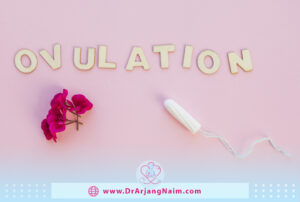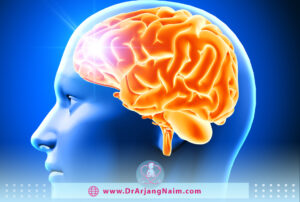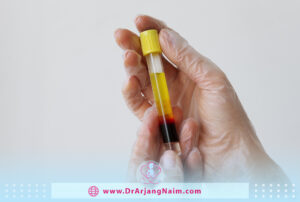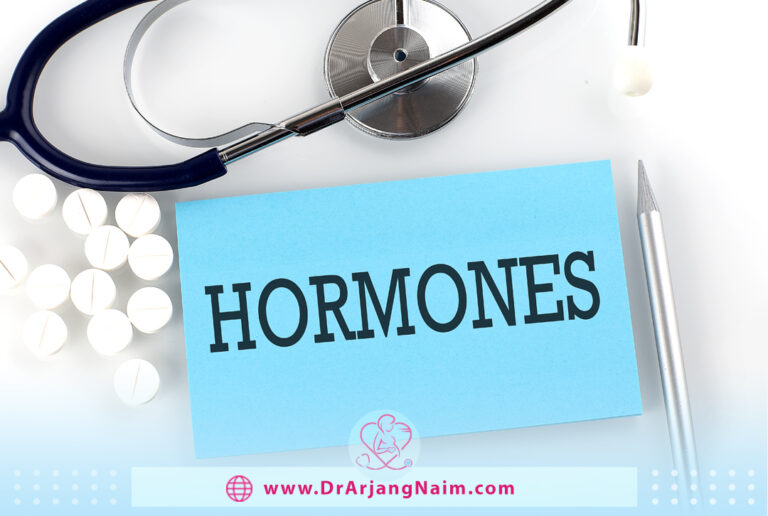Luteinizing hormone (LH) is a chemical in the body that initiates important processes in the reproductive system. LH stimulates ovulation and helps produce the hormone needed to support pregnancy.
It is an important hormone that is produced in both men and women. This hormone, known as gonadotropin, affects the sex organs in both men and women. It involves the ovaries in women and the testicles in men. LH is involved in puberty, menstruation, and fertility.
The amount of LH in the blood can indicate underlying problems related to various reproductive health problems. LH allows ovulation in female ovaries and facilitates testosterone production in male testes.
What is the luteinizing hormone?
LH is a hormone produced in the pituitary gland. The pituitary gland is located at the base of the brain and is about the size of a pea. LH is an important part of your menstrual cycle if you are a woman. This hormone works with follicle-stimulating hormone (FSH), another gonadotropin made in the pituitary gland. FSH stimulates the ovarian follicle and causes the egg to grow. It also causes the production of estrogen in the follicle.
Increased estrogen tells the pituitary gland to stop producing FSH and produce more LH. The shift to LH causes the egg to be released from the ovary, a process called ovulation. In the empty follicle, cells multiply and turn it into the corpus luteum. This structure releases progesterone, a hormone needed to maintain pregnancy. If pregnancy does not occur, progesterone levels decrease, and the cycle begins again.
If you are a man, your pituitary gland also produces LH. This hormone binds to the receptors of special cells in the testicles called Leydig cells. This leads to the release of testosterone, a hormone that is essential for the production of sperm cells.
Luteinizing hormone in women or DFAB
LH stimulates changes in women’s ovaries that maintain the menstrual cycle and support pregnancy. LH causes these changes in people who are determined female at birth (DFAB), including cisgender women and some transgender men, and non-binary people with a vagina.

Ovulation
The surge of LH causes the ovary to release a mature egg in the second week of each menstrual cycle. A high LH level at this time means that the woman is at that point in her cycle when pregnancy is most likely.
Progesterone production
LH causes a structure in the ovary called the corpus luteum to produce more progesterone during the third and fourth week of the menstrual cycle. Progesterone is a hormone needed to support the early stages of pregnancy.
With age and menopause, LH levels increase as estrogen and progesterone levels decrease.
Luteinizing hormone in men or DMAB
LH stimulates the testicles to produce testosterone, a hormone the body needs to produce sperm. Testosterone is also responsible for secondary sexual characteristics, such as a deeper voice, body hair, and muscle mass. LH stimulates testosterone secretion in people who are male at birth (DMAB), including cisgender men and some transgender women, and non-binary people with a penis.
LH levels remain relatively constant after puberty among DMAB subjects.
Luteinizing hormone in infants and children
During puberty, LH stimulates the ovaries and testes to produce more testosterone. Then in the ovary, testosterone is converted to estrogen. These hormones cause changes related to sexual development.

Where is it located?
LH is made in the part of the body responsible for regulating complex processes, the brain. But the organs that LH helps regulate are in the reproductive system.
LH is part of a complex communication network involving the brain (hypothalamus and pituitary gland) and sex organs (ovaries and testes). The hypothalamus secretes gonadotropin-releasing hormone (GnRH), which signals the pituitary gland to release LH. LH signals the ovaries or testes to make the hormones necessary to initiate and maintain reproductive processes.
Understanding this communication network is important in diagnosing reproductive health issues. For example, the root cause of fertility problems may involve the sex organs or hormone production in the brain.
Arjang Naim, MD, considers several factors that play a role in your reproductive health when diagnosing conditions that involve LH.
What happens when luteinizing hormone levels are high?
High levels of LH can indicate that the sex organs are not producing enough steroid hormones needed to carry out a reproductive process. It is common when the ovaries and testes stop producing estrogen and testosterone due to genetic, autoimmune, surgical, or physiological reasons.
Turner syndrome or fragile X in DFAB individuals and Klinefelter syndrome in DMAB individuals are genetic conditions associated with high LH levels.
Polycystic ovary syndrome (PCOS) is a condition that affects DFAB individuals and can cause a mild increase in LH levels. These are associated with irregular periods and infertility.
What happens when luteinizing hormone levels are low?
Low levels of LH can indicate that the pituitary gland is not producing the LH needed to stimulate changes in the body that support sexual development or reproduction. Low LH levels can be a sign of:
- Kallmann syndrome: A rare condition that results in insufficient production of testosterone and estrogen.
- Functional hypothalamic amenorrhea: when irregular or delayed periods are associated with excessive exercise habits.

What is the normal level of luteinizing hormone?
When you get your test results, remember that what’s considered normal depends on various factors, including age, gender, and medical history. For DFAB individuals, the timing of the menstrual cycle or menopause affects LH levels.
The numbers below give a general picture of normal LH levels for cisgender men and women. Ask your healthcare provider what your test results mean for you.
- Women, weeks one and two of the menstrual cycle: 1.37 to 9 IU/L
- Women, week two, before ovulation: 6.17 to 17.2 IU/L
- Women, weeks three and four of the menstrual cycle: 1.09 to 9.2 IU/L
- Women, postmenopausal: 19.3 to 100.6IU/L
- Men: 1.42 to 15.4 IU/L
How should you prepare for the luteinizing hormone blood test?
The doctor should give detailed instructions to prepare for the blood test. You may be told to stop taking certain medications that can affect the results, so be sure to tell your doctor about all medications and supplements you are taking. If you are a woman, you may need to stop taking birth control pills or other hormone pills for four weeks before the test. Your doctor will also want to know the date of your last period. As with most blood draws, you may be asked not to eat or drink for eight hours before the test.
Tell your doctor if you have had any type of test or procedure with radioactive material seven days before the LH blood test. These substances can interfere with your test results.
Can monitoring LH levels help you get pregnant?
Tracking LH levels can be very helpful if you are trying to conceive. Knowing when the LH surge occurs, you can roughly estimate when your fertile window has started and when it will end. The fertility window describes several days during which the probability of pregnancy is high if you have sex. It starts up to 5 days before ovulation and lasts about a week. There are two types of LH hormone tests: blood tests and urine tests.
Understanding how all the reproductive hormones work can be enlightening, especially regarding fertility issues. The interaction of LH with FSH, estradiol, and progesterone in women is complex. Tools like an LH level chart or menstrual hormone chart can help visualize their levels more clearly.
What is the relationship between FSH and LH?
FSH and LH are hormones in the anterior pituitary gland, and the HPG axis regulates both. They work together to affect the cells of the gonads, which is why their balance in the blood is so important to maintain reproductive function.
In women, FSH and LH act together on different cells in the ovary to facilitate egg maturation and ovulation each month. Both hormones are also important after ovulation, although LH-dependent maintenance of the corpus luteum is more important at this stage. The ratio of circulating LH to FSH, also called the LH: FSH ratio, is used to help diagnose polycystic ovary syndrome (PCOS) in women.
In men, FSH and LH act on different cells in the testes to regulate reproductive function. Sertoli cells, which are responsible for the maturation of immature sperm cells, are activated by FSH. Meanwhile, LH facilitates testosterone production by stimulating Leydig cells.
The bottom line
The results of the LH test help the doctor determine if a man or woman has a problem with their reproductive system. Doctors also use the LH test to diagnose problems with the pituitary gland and the early or late onset of puberty.
Women can do LH urine tests at home to check when they are ovulating, which can help them get pregnant. A woman is most fertile around ovulation.
LH testing has the potential to indicate a number of disorders related to growth and fertility. If your doctor suspects that you may have a disease that affects your ovaries, testicles, or parts of the brain that produce LH, the test can provide more information.
Additional questions
- What is the role of gonadotropins in fertility?
Gonadotropins are hormone injections used in fertility treatments to stimulate ovulation because they contain follicle-stimulating hormone (FSH), luteinizing hormone (LH), or both FSH and LH, depending on the unique fertility medication. These two hormones are essential for ovulation.
- What is the corpus luteum in pregnancy?
The corpus luteum produces a hormone called progesterone, which the uterus needs to support the growing fetus. It is destroyed when it is no longer needed. A cyst forms when the corpus luteum continues to grow.
- What are Leydig cells?
Leydig cells are the main source of testosterone or androgens in men. This physiology allows them to play an essential role in many vital physiological processes in males, including sperm production or spermatogenesis, control of sexual development, and maintenance of secondary sexual characteristics and behaviors.
- What happens in Klinefelter syndrome?
Klinefelter syndrome is a common genetic disorder in which a male is born with an extra X chromosome. Normally, a man has one X chromosome and one Y chromosome. People with Klinefelter syndrome may experience breast enlargement, breast cancer, osteoporosis, infertility, and learning difficulties.
- Does estrogen affect LH or FSH?
The effect of estrogen on the response to FSH is greater than that of LH and decreases with age. Estrogen-negative feedback occurs directly in the pituitary and contributes to the differential regulation of FSH and LH secretion.
References
https://my.clevelandclinic.org/health/body/22255-luteinizing-hormone
https://www.testing.com/tests/luteinizing-hormone-lh/
https://www.healthline.com/health/lh-blood-test#outlook
https://www.medicalnewstoday.com/articles/324122#lh-and-fsh-tests
https://www.webmd.com/a-to-z-guides/luteinizing-hormone-test




